7 Companion Plants for Basil (with Pictures)
-

- Last updated:

If you are planning and putting some basil plants in your garden, you may want to consider doing some companion planting. Basil attracts Japanese beetles, aphids, slugs, and snails, but it also repels asparagus beetles, mosquitos, flies, and hornworms. With companion planting, you can use plants to help protect your basil, while the basil, in turn, will benefit the other plants in the garden. So, which plants make a good companion for basil? Read on to learn more!

The Top 7 Companion Plants for Basil
1. Asparagus

| Hardiness Zone: | 3–8 |
| Compatible Plants: | Basil, parsley, lettuce, nasturtiums |
| Plants to Avoid: | Root vegetables, onions, and garlic |
| Soil: | Well-drained |
Asparagus is an ideal choice as a companion plant for basil. Basil is good for repelling the asparagus beetle, which is beneficial for the asparagus. In return, the asparagus attracts ladybugs that prey on aphids. Planting them together helps to reduce the risk of damage from insects for both plants.
Benefits: Asparagus plants can provide shade to other plants. They also attract ladybugs that prey on aphids.
2. Tomatoes
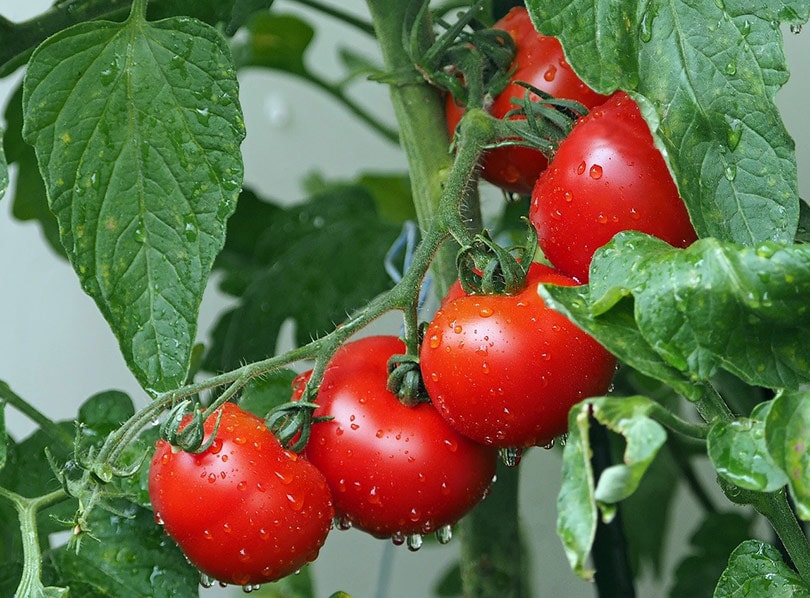
| Hardiness Zone: | 5–8 |
| Compatible Plants: | Asparagus, celery, chives, parsley, basil, marigolds, carrots, chervil |
| Plants to Avoid: | Cucumber, potatoes, fennel, rosemary |
| Soil: | Well-drained |
Tomato plants are an excellent choice for a companion plant for basil because they both thrive in well-drained soil and full sun. The basil helps to increase the yield of the tomatoes and deters the hornworms.
Some believe that planting tomatoes and basil together can enhance the flavor of both the basil and the tomatoes.
Use caution when placing the plants, however. The tomato plants can grow between 2 and 6 feet tall, depending on the type of plant. If it is not placed properly with the basil, it can decrease the growth of the basil.
Benefits: Basil and tomatoes thrive in the same environment, and they enhance one another’s flavor.
3. Marigolds

| Hardiness Zone: | 2–11 |
| Compatible Plants: | Potatoes, cucumbers, strawberries, melon, corn, basil, peppers, zucchini, squash |
| Plants to Avoid: | Beans and cabbage |
| Soil: | Well-drained |
Marigolds are an excellent companion plant for many plants, including basil. Not only do they repel pests like aphids, Japanese Beetles, slugs, and nematodes, but they also attract useful ones, too. Marigolds will attract hoverflies, parasitic wasps, and ladybugs. All these insects aid in controlling unwanted pests in your garden. It may also improve the flavor of the herb.
If you plant marigolds with your basil, be sure to use plants that are low-growing to avoid crowding around the basil.
Benefits: Marigolds provide protection for insects because they give off a strong scent. Some varieties, like the French marigold, can give off chemicals that repel the pests long after the plant is gone.
4. Bell Peppers
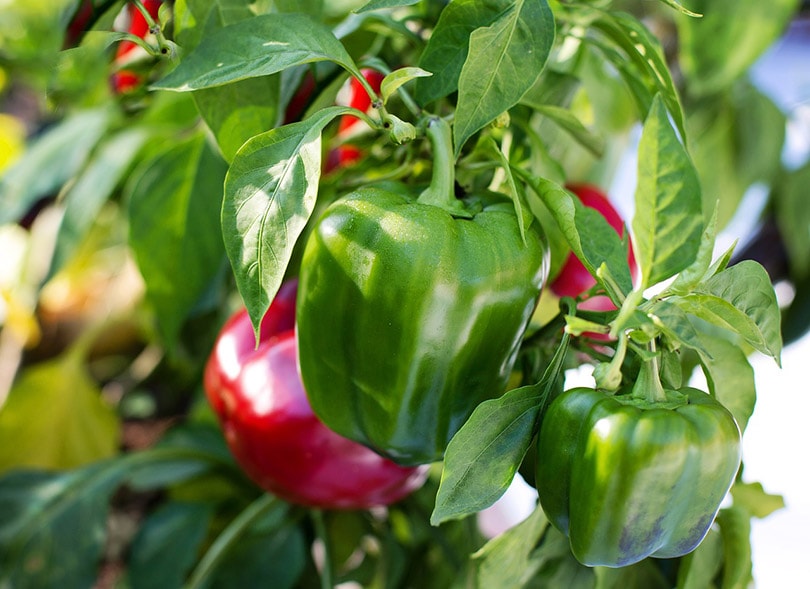
| Hardiness Zone: | 1–11 |
| Compatible Plants: | Plants: beets, basil, alyssum, chives, garlic, green beans, eggplant, spinach, carrots |
| Plants to Avoid: | Apricots, beans, brassicas, fennel |
| Soil: | Moist, well-drained |
Bell peppers are another desirable choice for a companion plant for basil. Planting bell peppers and basil together will improve the flavor of both plants.
Basil makes an ideal insect repellent for mosquitoes, flies, and spider mites that like to feed on peppers. In return, the pepper plant helps protect the basil plant from harsh weather and provides it with some shade when the heat is extreme.
Benefits: The leaves provide protection from extreme weather. It also helps to prevent weeds and retain moisture in the soil.
5. Borage
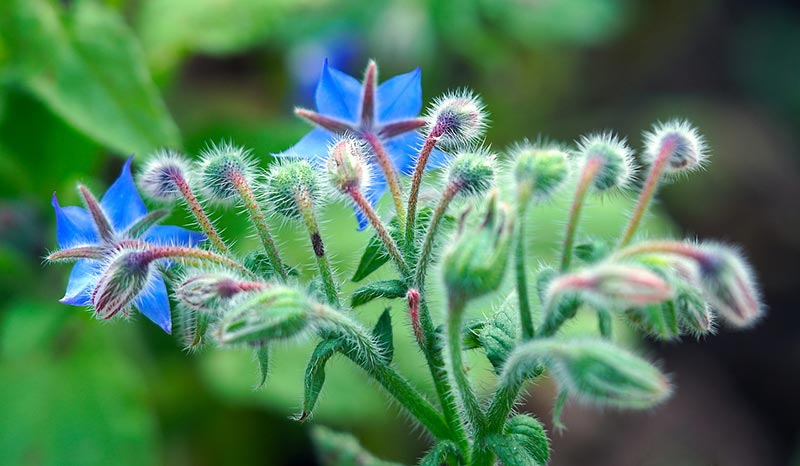
| Hardiness Zone: | 3–10 |
| Compatible Plants: | Tomatoes, strawberries, squash, cabbage |
| Plants to Avoid: | Potatoes, eggplant, peppers, tomatoes |
| Soil: | Well-drained, moist |
Borage is a fast-growing and pretty plant with star-shaped hanging flowers. The leaves of the plant taste and smell like cucumbers, and so do the flowers.
It is an excellent companion plant for basil because it attracts bees and other helpful insects to the garden. It is also known to improve the flavor of basil.
Borage is also helpful with other basil companions like tomatoes because it keeps away the tomato hornworms.
Benefits: Bees, honey bees, and ladybugs are all pollinators that are attracted to the borage. The aroma of the plant also repels destructive pests.
6. Garlic
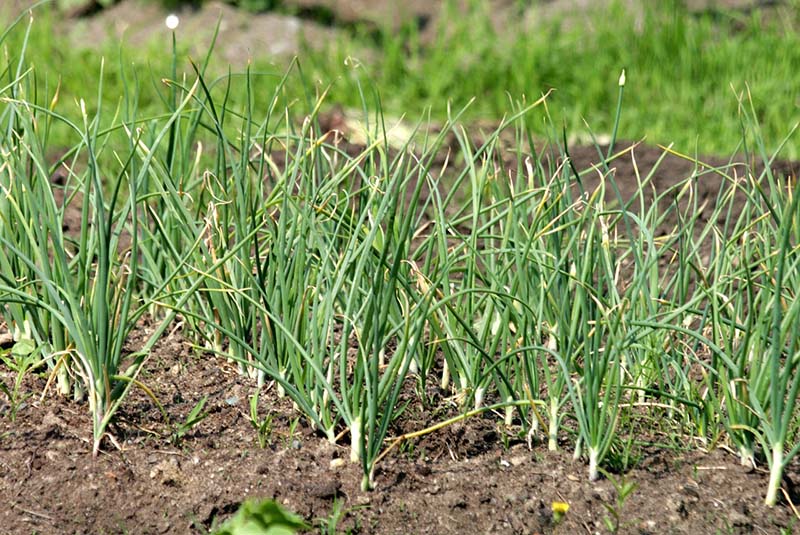
| Hardiness Zone: | 1–5 |
| Compatible Plants: | Cucumbers, dill, tomatoes, parsnips, basil, carrots, beets |
| Plants to Avoid: | Beans, peas, potatoes, brassicas, asparagus |
| Soil: | Well-drained, moist |
Garlic repels spider mites, whiteflies, and aphids so they are beneficial to basil plants. Both complement each other and improve their flavor when planted together. They need some growing room, however, so give them space when you are planting them.
Basil, tomatoes, and garlic are excellent to plant together. Garlic and basil keep pests from tomatoes, and garlic is good for keeping away rabbits and squirrels.
Benefits: Garlic has a strong scent that repels whiteflies, spider mites, and aphids. It also enhances the flavor of basil.
7. Root Vegetables

| Hardiness Zone: | 3–10 |
| Compatible Plants: | Garlic, marigolds, basil, lettuce, squash |
| Plants to Avoid: | Varies |
| Soil: | Well-drained, loose |
Root vegetables, like carrots, are ideal companion plants with basil. The taproot from the carrot plant helps to loosen the soil so the basil can spread and grow. The thick leaves from the carrot plant also provide some shade to the basil plant from the sun on extremely hot days.
Carrots are not the only root vegetable that is a good companion plant for basil. There are other root vegetables like radishes, turnips, and beets that can benefit from the pest-repelling properties in the basil plant.
Benefits: The carrot plant helps with drainage, loosens the soil, and provides shade for the basil plant. Basil also repels pests for the root vegetables.

The 5 Worst Companion Plants for Basil
While companion planting can be extremely beneficial to plants, there are some plants that should be avoided with basil.
1. Thyme
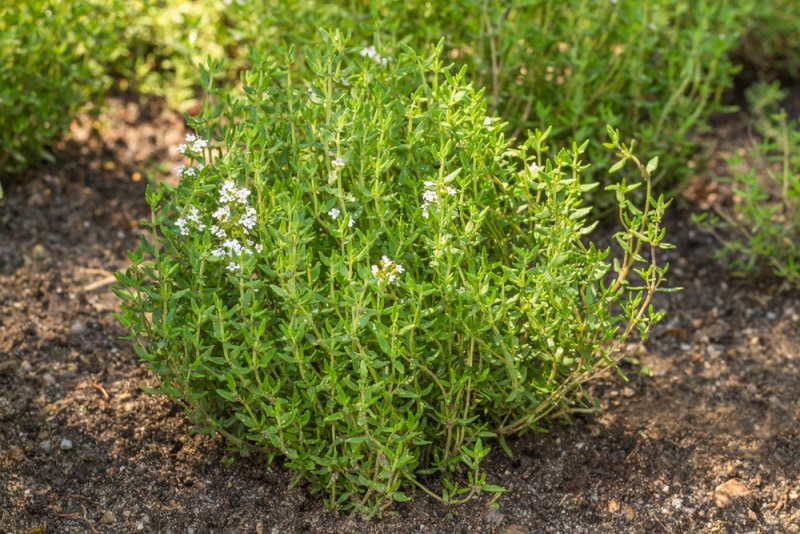
Thyme and basil are not ideal choices for companion planting. Basil prefers soil that is high in nutrients and moisture. Tyme, on the other hand, likes drier or sand-like soil conditions.
2. Rue
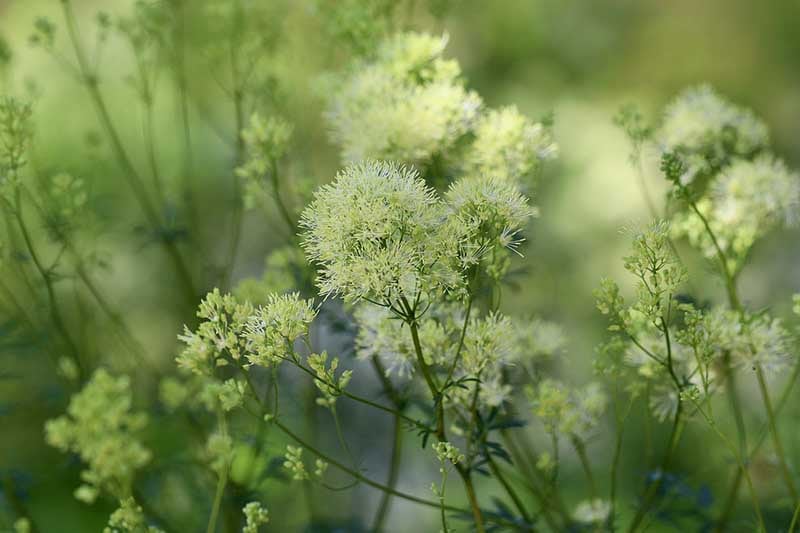
Rue is a definite no-no when it comes to companion planting with basil. Rue can cause a bitter taste to your basil. It is also known to stunt growth and leave the plant susceptible to diseases and pests.
3. Sage
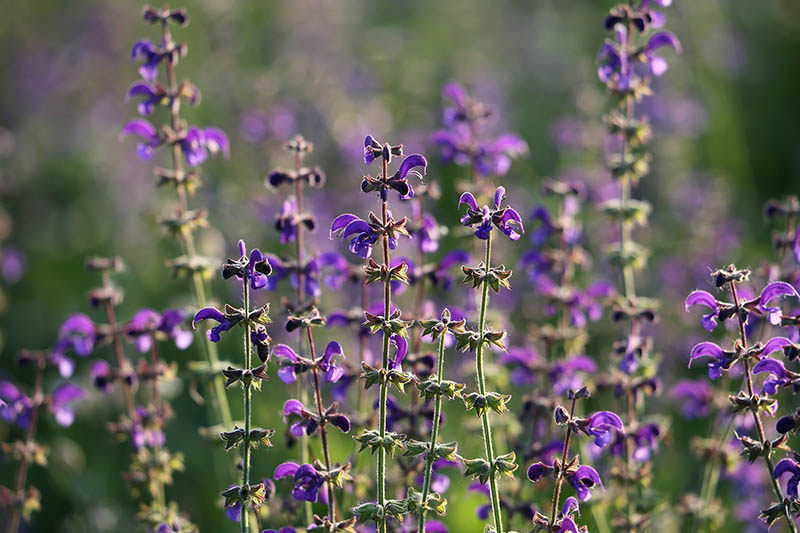
Like thyme, sage is not a good companion plant for basil since they have different soil needs. Basil requires a more moist soil to thrive.
4. Fennel
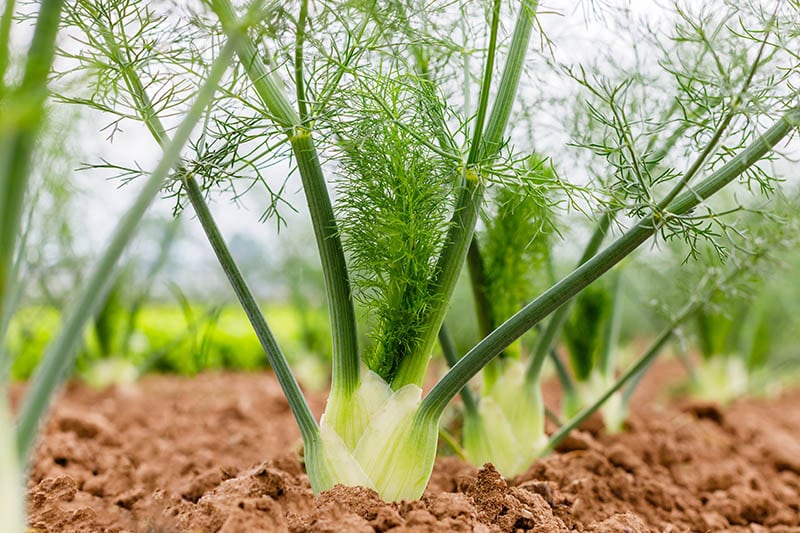
Fennel is not a plant that has a good relationship with others. It can stunt the growth of your plants and attract insects to your basil.
In fact, it is not a good idea to plant fennel with any garden food.
5. Cucumbers

Cucumbers are not a good companion plant for basil. The two plants will try to rob one another of water and nutrients.
Since plants tend to impose their flavor on one another, planting cucumbers with basil will affect the taste of the cucumbers. Basil flavored cucumbers anyone? The two do not make good companions.

The Benefits of Companion Planting
Companion planting allows plants to benefit from one another. They provide each other with things like moisture, shade, and nutrients. These benefits can help to improve the health and growth of your plants.
Pest Control
For gardeners who do not want to use pesticides, companion planting is an ideal way to naturally control the pests in your garden.
Attracts Beneficial Insects
Ladybugs, butterflies, and bees are beneficial insects for your garden. They naturally control the pests that are attracted to your plants.
Improves Soil
When certain plants are grown together, it can improve the fertility of the soil in your garden. Companion planting adds nutrients and organic matter to your garden which improves the quality of the soil.
Improves the Flavor
Companion planting can enhance the flavor of your vegetables. The plants will work in sync to improve the flavor of your vegetables.

Conclusion
At times, mapping out the best way to space the plants in your garden can be challenging. While one plant may be a good companion for one, it may not work well with another. Companion planting can improve the growth, health, and flavor of your garden vegetables. It can also help to improve the soil and provide plants with protection from harsh weather and pests.
Featured Image Credit: Jing, Pixabay
Contents
